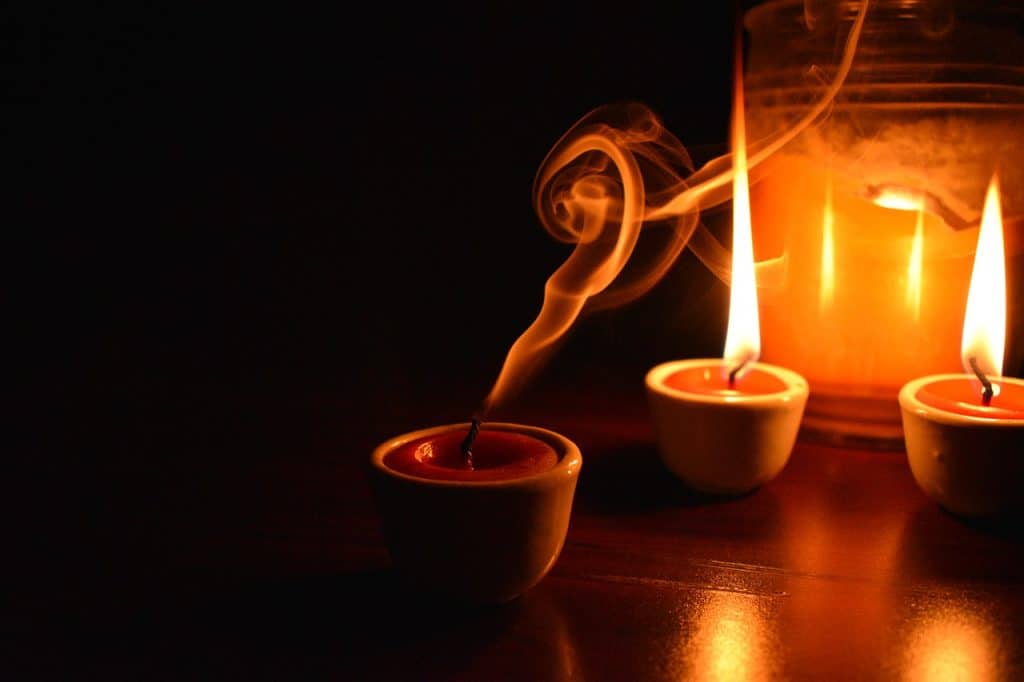Candles are items that are made from wax (which could be from tallow or boiled down animal fat, beeswax, paraffin wax, soy wax and other kinds of wax), and candle wick. They are very important household items, which are used for providing indoor illumination in a lot of houses around the world. Candles used to be very popular in the old days, or at least up to the end of the 19th century, when electric bulbs were first invented and commercialized. In recent times, however, candles have become popular again.
THE ORIGIN OF CANDLES
Candles were first invented thousands of years ago, back when the world was not as technologically evolved as it is today. Some of the earliest records of candles date back to more than five thousand years ago, however, it is possible that candles may have existed long before than (after all, there were no sold records of inventions back in those days, and no sort of computer database system that could have been used to store those kinds of information). No one knows exactly when candles were invented or the identity of the person that discovered the act of candle-making. However, the earliest kinds of candles were usually made from tallow or boiled down fat obtained from the carcasses of cows and other types of livestock. In some parts of Asia, candles were made from fat obtained from sharks and other types of sea mammals (however, this practice – of making candles with fat gotten from sharks and other sea animals – is a lot less prevalent today, due to the scarcity, conservation and extinction issues connected to these kinds of creatures).
For a very long time, tallow wax was the most common material used for making candles (particularly in developed nations in the world). Back in those days – centuries ago – candle-makers (or chandlers) used to move from household to household, in order to make candles for them; using the leftover fat, which has been collected in the kitchens. Also, chandlers used to learn the trade for long periods of time, through apprenticeships under professional masters. However, this was before paraffin wax became popular.
In the 19th century, when paraffin wax candles were first invented and commercialized, a lot of candle makers began to switch from tallow to paraffin wax; because they were much cheaper and easier to work with.

THE ROLES OF CANDLES TODAY
The entire field of candle making, however, changed completely once the electric light bulb was invented and commercialized, towards the end of the 19th century. Nevertheless, candles are back in vogue today because of their role and widespread use in the field of aromatherapy.
Although, plain candles are sometimes used in meditation, scented candles are the types of candles that are usually used in the area of aromatherapy. This is because aromatherapy is a field that involves the reduction and treatment of stress and other issues through the inhalation of scents and aromas, which are usually emitted from plant based perfumes. These kinds of perfumes are ideally added to scented candles while they are in melted, liquid form; during the process of candle making. And because they are supposed to be of natural, plant based origins (ideally), these kinds of perfumes tend to contain very little allergens or none at all, which makes them relatively safe for people that inhale their aroma, when they are burned.
When the aroma, which is emitted from the burning of scented candles, is inhaled, it begins the process of aromatherapy, because it is believed that these scents will help a person relax and relieve their stress. Some people also believe that scented candles can help individuals, during the process of anger management. Aside from aromatherapy, scented candles are also used in setting the mood for romance, among other things (for instance, some people put candles on display when they plan marriage proposals, or intimate interactions with their loved ones). And these uses are some of the reasons why candles are very popular today.
In other instances, candles made from edible materials (or similar types of items) are usually placed on top of cakes on people’s birthdays; blowing them out is a longstanding tradition.

HOW TO PROLONG CANDLE BURNING TIME
Candles tend to burn out after a while, when their wax is exhausted. This is because the candle wax serves as fuel to the candle flame. And like every other type of flame, candles cannot burn in the absence of fuel.
Due to the fact that a lot of people use candles, around the world, many people tend to ask questions about how to prolong a candle’s burning time. Some of the solutions include;
- Use the right type of candle wax during candle making
The materials used in making candle wax should ideally support burning. And so one of the first ways to prolong a candle’s burning time is to make sure that the right kind of materials are used in making it. This can be easily done by checking the packaging of any purchased candle, as the materials used in making the candle wax (e.g. beeswax, paraffin wax, soy wax, tallow or combinations of different types of waxes), are typically indicated by the manufacturer.
- Burn your candle in the right location
Candles that are usually placed in windy places tend to burn a lot less effectively. This is because strong wind typically affects the direction in which a candle’s flames burn. When this happens, such an instance can result in incomplete combustion and tunneling; which is basically one of the methods by which candles’ burning time can be shortened.
Tunneling, in candles, typically occurs when only the innermost part of a candle burns (i.e. the areas closest to the wick). When this happens, the center of the candle will burn down faster than its surrounding areas, and this will lead to wastage of candle wax (because the candle will not burn for as much time as it is supposed to). In order to prevent this, candles should not be allowed to burn in windy places.
- Use the right kind of candle wick, during candle making
Another thing that can lead to tunneling (and subsequent reduction of a candle’s burning time), is the kind of material used in making the candle wick. If a candle’s wick burns a lot hotter than it should, the wax will tend to melt quickly – especially around the center of the candlestick. When this happens, tunneling can occur. Therefore, it is important to check the kind of materials used in making the candle’s wick, when possible.
- Trim your candles before use
Candles should be trimmed before use, in order to reduce the length of the wick and prevent tunneling. This process is an important part of prolonging a candle’s burning time, and it should be done every time the candle is to be lit.




